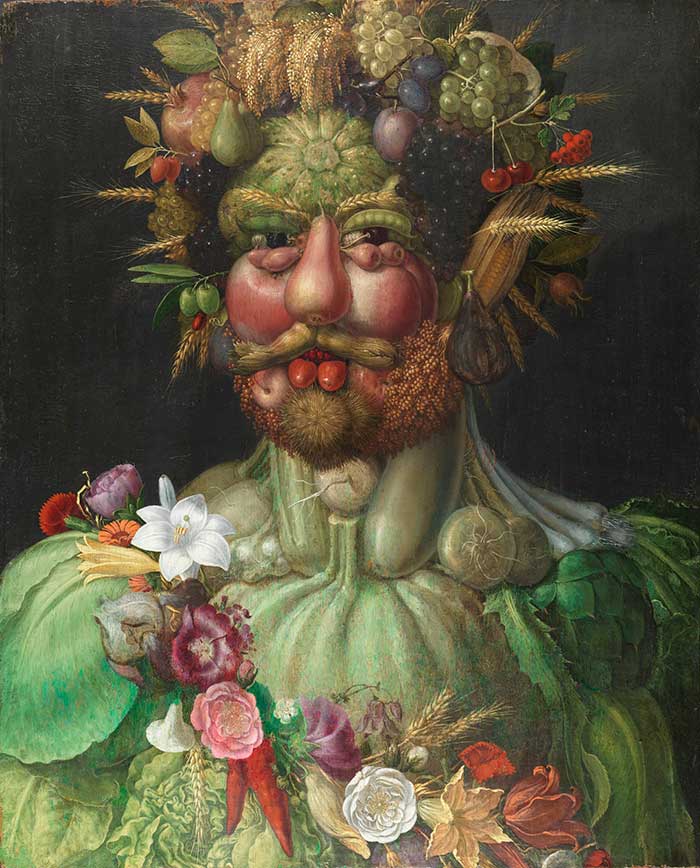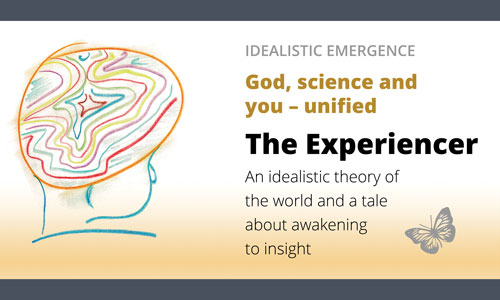How does the development continue? What drives it?
When the Experiencer interprets something as an idea, something new always arises simultaneously.
An example:

This painting from 1591 by Giuseppe Arcimboldo is a portrait of Rudolf II, who was king of Austria and Hungary. He is depicted as Vertumnus, the God of the seasons; therefore, the Italian painter chose to compose the picture by putting together different fruits.
Experiencing works just like that; it tries to find out what something unknown is by associating it with something known, interpreting it as something known. Then fruit can turn into faces.
Another example could be a child lying on the grass looking at drifting clouds. The child imagines fabulous animals, castles, princes and princesses.
As the Greeks said, through emergence arises order from chaos, or cosmos from chaos.
With each interpretation, new raw material forms and require further interpretations.
This «new raw material», the new «something», consists of the latest interpretation combined with previous interpretations, i.e. existing knowledge.
Emergence is thus the main principle of all creation. It does not happen by any plan, God's will, or anything. There is no divine meaning. It happens out of necessity because every change leads to new changes. It is inevitable.

